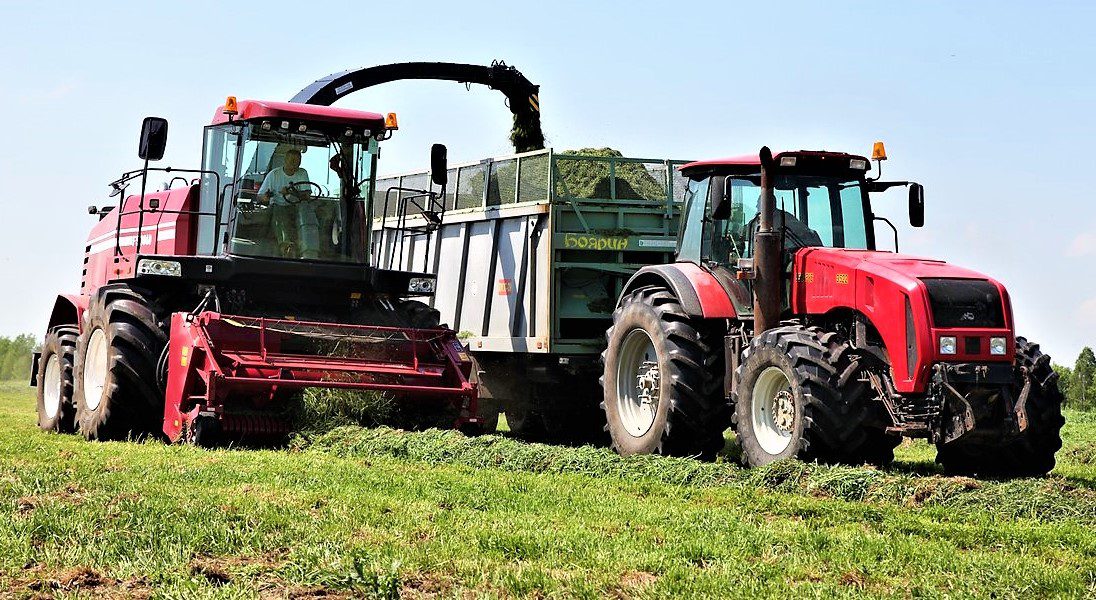AgriLand recently profiled Russian harvester manufacturer Rostselmash – a company most readily associated with combine harvesters and self-propelled forage harvesters.
The company took over Versatile – a Canadian-based manufacturer – back in 2007; Rostselmash is now badging some of its machines as ‘Versatile’ harvesters.
Also Read: Will these Russian forage harvesters make it to Ireland?Here, in this article, we take a quick look at Gomselmash. It, like Rostselmash, claims to be an agricultural machinery manufacturer of global proportions. Like its Russian counterpart, it too is well known for its combine harvesters and a diverse line-up of self-propelled foragers.
Gomselmash is headquartered in the Republic of Belarus. Its legacy stretches back over eight decades. The entity now claims to have produced in excess of 2,500,000 agricultural machines, including sizeable numbers of forage harvesters in particular.
The company now exports over 90% of its production; that figure has grown rapidly from just over 72% in 2012. In that year its machines were delivered to buyers in just 10 countries; now that number has grown to 26.
Following the rationale of ‘if you want something done right, do it yourself’, most of the components for its harvesters are made in-house.
Harvester types
Many of Gomselmash’s harvesters are marketed under the ‘Palesse’ product name; it encompasses grain and forage equipment – as well as even potato harvesters.
In fact, the range includes 16 different equipment lines, stretching out to over 75 different models.
Palesse-badged combine harvesters are currently operating in Russia, Ukraine, Kazakhstan, Czech Republic, Slovakia, Romania, Bulgaria, the Baltics, Argentina, Brazil, Iran, China and South Korea, alongside other countries.
Gomselmash produces six different types of self-propelled forage harvester. The FS8060 (below) has a 632hp engine, six feed-rollers and a 20 or 40-knife drum (chopping cylinder). It can be equipped with a 3m or 3.8m-wide pick-up or a variety of direct-cut heads.
Next up is the 450hp FS80 (below). It’s a smaller machine. Unlike its bigger brother – the FS8060 – it has just four feed-rollers. The drum is 780mm wide; its diameter spans 630mm. Up to 40 knives can be accommodated.
Without a front attachment (head), it weighs 11t.
The 330hp FS6033C (below) is perhaps the most novel model; it runs on tracks and has a 12m³ tanker (bunker). It is designed for cutting maize (at any ripeness), sorghum, sunflowers and other rough-stemmed crops. It, with a suitable attachment up front, can also mow grass or pick up swaths.
The 255hp FS6025 (below) is an especially distinctive machine. With the small, steering wheels at the front, it might spark memories (for some readers) of old Hesston foragers from yesteryear – such as the once-popular 7650. The FS6025 can accommodate 20 knives on its 630mm-diameter drum.
With no front attachment (head), this machine tips the scales at just 9t.
The 234hp FS60 (below) has a side-mounted cab – lending it a decidedly old-school ‘look’. Its 750mm-wide drum can be equipped with up to 24 knives. Without an attachment (head), it weighs just over 8t.
Last up is the baby of the range – the K-G-6 (below). It comprises a so-called “universal power vehicle” – namely the 2U280, 2U250 or U280 – and an FH40 mounted harvester along with, of course, a suitable attachment (head).
Available heads include direct-cut (maize and whole-crop) and pick-up (grass) units.
The FH40 harvester employs a flywheel-type chopping system – similar to that employed on trailed Mengele (now Lely) and Pottinger harvesters, which are familiar to farmers and contractors here in Ireland.









